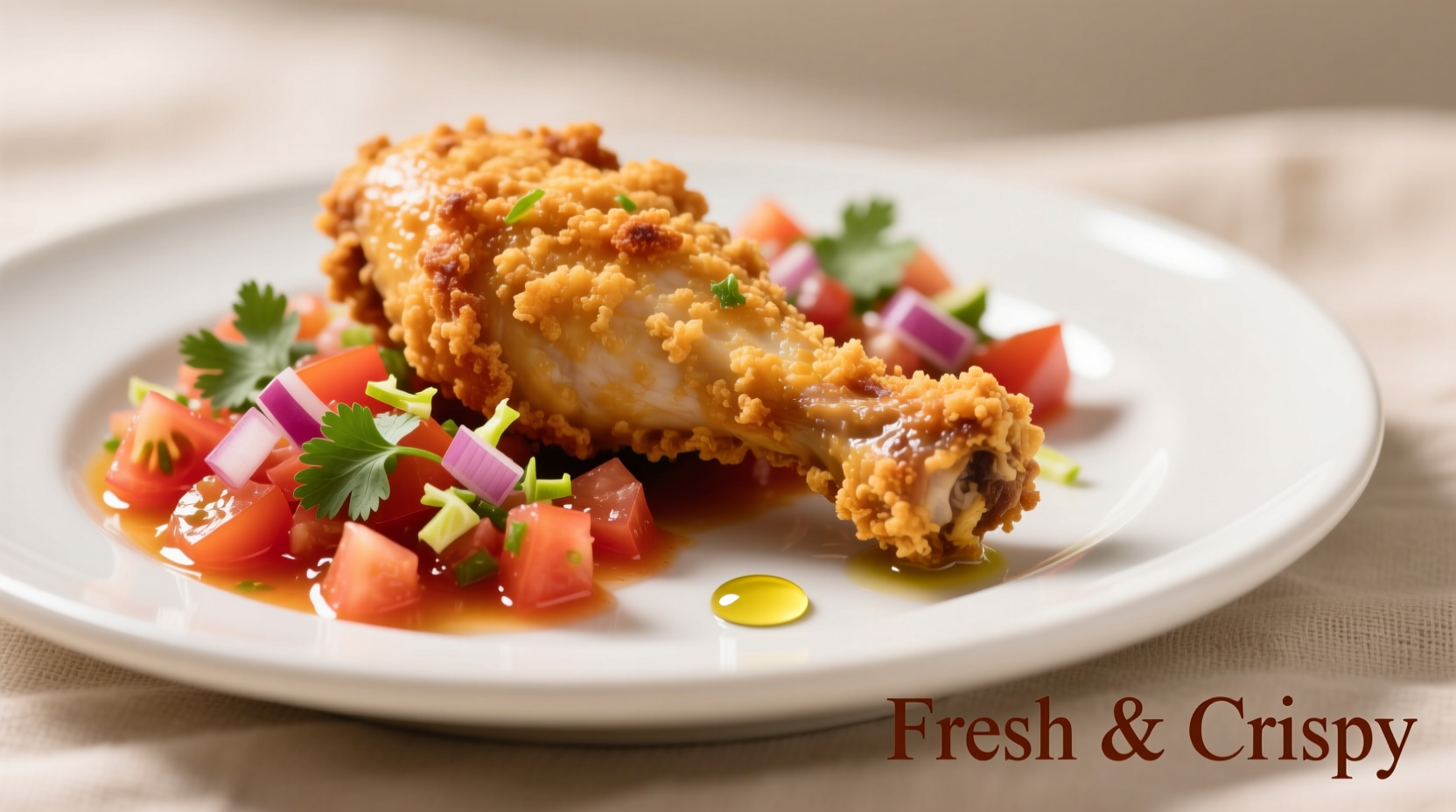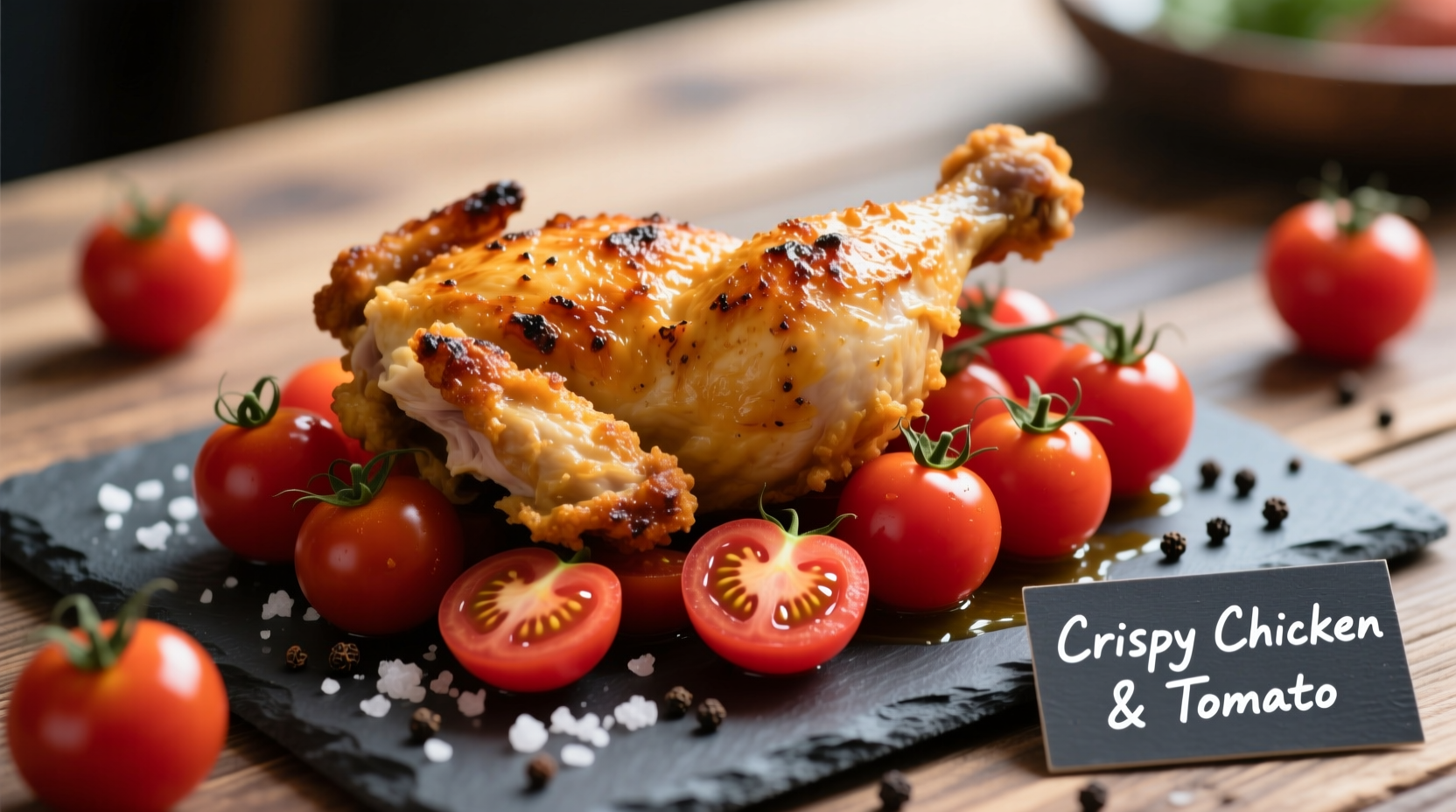Discover why this classic pairing has stood the test of time and how to perfect it in your own kitchen. Whether you're preparing a simple weeknight dinner or an impressive weekend meal, understanding the science behind crispy chicken and tomatoes will transform your cooking results.
The Science Behind This Perfect Pairing
Food chemistry explains why crispy chicken and tomatoes work so well together. The Maillard reaction creates complex flavor compounds during frying that complement the umami-rich glutamic acid naturally present in tomatoes. According to research published in the Journal of Food Science, the acidity of tomatoes (pH 4.3-4.9) cuts through the richness of fried foods, cleansing the palate between bites and enhancing overall flavor perception.
| Cooking Method | Oil Temperature | Texture Result | Best Tomato Pairing |
|---|---|---|---|
| Deep Frying | 350°F (175°C) | Consistently crispy | Fresh tomato salsa |
| Air Frying | 400°F (205°C) | Slightly less crispy | Roasted tomato relish |
| Pan Frying | 325-375°F (163-190°C) | Variable crispiness | Tomato jam |
Mastering Crispy Chicken Technique
Professional kitchens achieve perfect crispy chicken through precise temperature control and proper preparation. The USDA Food Safety and Inspection Service recommends cooking chicken to an internal temperature of 165°F (74°C) to ensure food safety while maintaining moisture. For optimal crispiness:
- Dry the chicken thoroughly with paper towels before coating
- Use a buttermilk or egg wash followed by a seasoned flour mixture
- Maintain consistent oil temperature using a reliable thermometer
- Rest chicken on a wire rack after frying to prevent sogginess
Common mistakes that lead to soggy chicken include overcrowding the pan, insufficient oil temperature, and skipping the resting step. Remember that humidity affects crispiness—on humid days, extend frying time by 1-2 minutes.
Selecting and Preparing Tomatoes for Maximum Flavor
Not all tomatoes work equally well with crispy chicken. The University of California Agriculture and Natural Resources notes that vine-ripened tomatoes contain higher sugar content and better flavor complexity than greenhouse-grown varieties. For pairing with crispy chicken:
- Summer months: Use heirloom or beefsteak tomatoes for fresh salsas
- Cooler seasons: Opt for roasted cherry tomatoes or tomato confit
- For sauces: San Marzano tomatoes provide ideal consistency
Tomato preparation significantly impacts the final dish. Raw tomatoes offer bright acidity that cuts through fried foods, while roasted tomatoes develop deeper umami notes that complement the chicken's savory crust. For best results, prepare tomatoes separately from the chicken to maintain their distinct textures.

Step-by-Step Perfect Pairing Guide
Follow this professional technique for restaurant-quality results at home:
- Prepare chicken: Pat boneless pieces completely dry with paper towels
- Create coating: Mix 2 cups flour with 1 tsp each salt, pepper, garlic powder, and paprika
- Dip chicken: Buttermilk followed by flour mixture, then repeat for double coating
- Rest: Allow coated chicken to sit 10 minutes before frying
- Heat oil: Maintain 350°F (175°C) in deep fryer or heavy skillet
- Fry: Cook 12-15 minutes until golden brown and internal temperature reaches 165°F
- Drain: Place on wire rack, not paper towels, to maintain crispiness
- Prepare tomatoes: Chop ripe tomatoes with red onion, cilantro, and lime juice
When This Pairing Works Best (And When It Doesn't)
Understanding context boundaries prevents disappointing results. This combination shines in these scenarios:
- As a main course with fresh tomato salsa during summer months
- With roasted tomatoes as a comforting fall/winter meal
- Using tomato-based sauces with oven-fried chicken alternatives
It typically falls short when:
- Using unripe or refrigerated tomatoes (loses flavor and texture)
- Pairing with overly sweet tomato sauces that clash with savory chicken
- Attempting with soggy, improperly fried chicken
Troubleshooting Common Issues
Fix these frequent problems with professional solutions:
- Soggy chicken: Increase oil temperature by 10-15°F and ensure chicken is completely dry before coating
- Bland tomatoes: Add a pinch of sugar to enhance natural sweetness and balance acidity
- Uneven browning: Maintain consistent oil temperature and avoid overcrowding the pan
- Sauce separation: Let fried chicken rest before adding moist tomato components
Regional Variations Worth Trying
Chefs worldwide have adapted this pairing to local tastes. The Food Timeline documents that tomatoes entered European cuisine in the 16th century, gradually becoming paired with chicken dishes across continents:
- Mediterranean: Crispy chicken with tomato-caper relish and olives
- Mexican: Crispy chicken with fresh pico de gallo and avocado
- Southern US: Buttermilk fried chicken with tomato jam and pickles
- Italian: Pan-fried chicken cutlets with fresh tomato basil sauce











 浙公网安备
33010002000092号
浙公网安备
33010002000092号 浙B2-20120091-4
浙B2-20120091-4